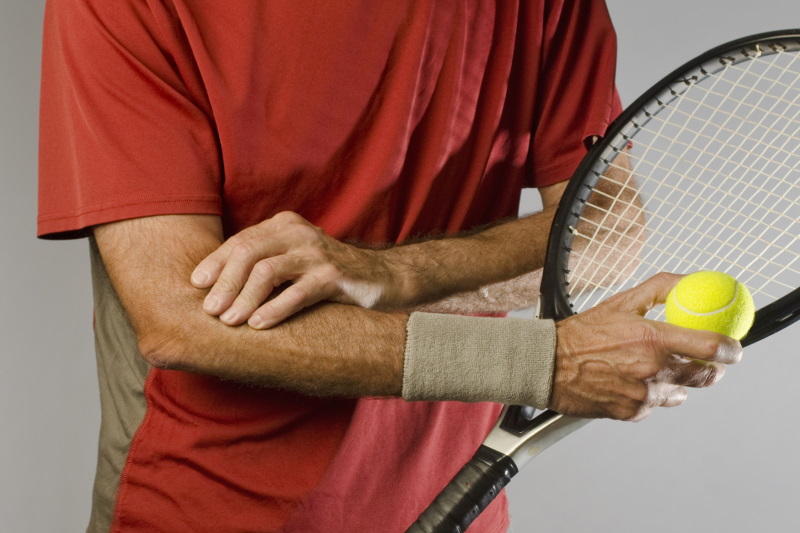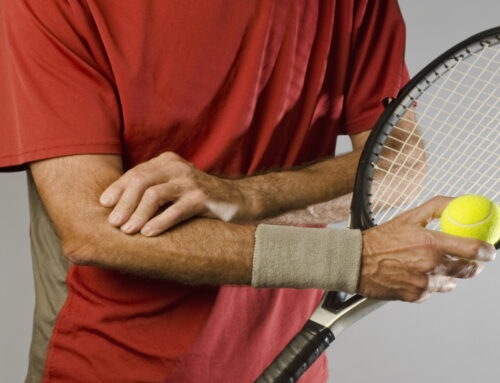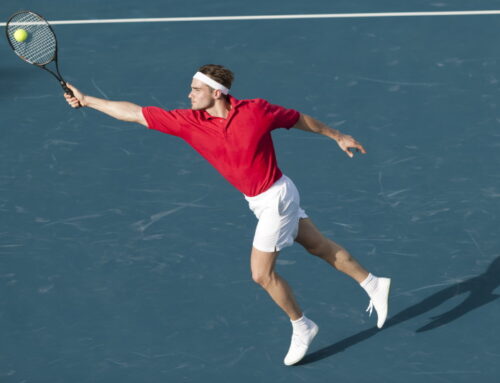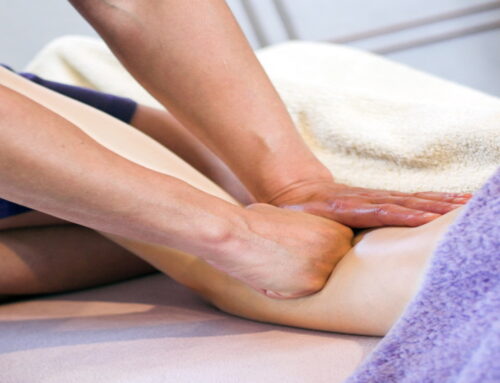Any tennis players complaining of pain in the front of their elbow after long hours competing on the courts this summer? If so you may be suffering from a condition called biceps tendinosis which is caused by a breakdown or degeneration of the biceps tendon as it inserts into the front of the elbow joint. Although there is a lack of reference to elbow or distal biceps tendinosis in the literature possibly due to under reporting of the condition as a clinical diagnoses, there is a high prevalence of this particular injury in tennis players due to the repetitive loading and high impact forces experienced by the elbow joint on ball impact.
What are the symptoms of Biceps Tendinosis of the elbow in tennis?
Typically players will experience a dull ache at the front of the elbow, depending on how severe or advanced the tendinosis is the ache may be constant or may come and go depending on the stress being placed on it during play. The pain is usually more severe with forehand and service strokes as these shots place a greater load on the biceps tendon. In more severe cases just gripping the racket can become painful and some tennis players may experience difficulty holding the racket between points and feel the need to place the racket into the none playing hand for relief.
Why does Biceps Tendonosis of the elbow occur in tennis players?
Tendonosis can be triggered by either an acute incident whereby the tendon is unexpectedly overloaded or can be due to repetitive loading overtime resulting in a gradual breakdown of the tissue. For tennis players biceps tendonosis more commonly presents as a repetitive strain injury in which the biceps tendon starts to gradually breakdown due to overuse and undergoes degenerative changes at cellular level. These changes cause the tendon to weaken and become painful.
What are the common risk factors associated with developing biceps tendinosis of the elbow?
A sudden increase in the volume of play or competition can sometimes be a causative factor in the development of biceps tendinosis in tennis players. In particular players who lack the strength and conditioning in the tendon to cope with the extra repetitive loading will be more susceptible to the injury.
Changes in equipment such as a rise in string tension or the use of heavier balls will increase peak forces acting on the elbow joint during ball impact, this extra force or load can be a contributing factor in developing biceps pain.
There may be biomechanical reasons for why the condition develops, asymmetries in muscle strength or restrictions in joint movement all have the potential to alter the distribution of forces acting on the elbow. If these asymmetries in strength or limitations in joint movement result in increased loading of the biceps this will place the player at greater risk of injury. Often incorrect technique can be a contributory factor in biceps tendon injuries which is why novice players rather than elite tennis players suffer more from upper arm associated injuries in tennis.
How is Biceps Tendinosis treated?
Firstly your physiotherapist at Portobello Physiotherapy Clinic will take a thorough history and perform an in depth physical assessment to ascertain what caused your biceps injury. Usually modification of how much tennis you are playing or in most cases a period of rest from the game is recommended. Remember pain is the last sign your body gives you that something is wrong, its you’re brain telling you to stop! If you continue to play with a weakened biceps tendon you run the risk of greater injury! Although rare complete rupture of the biceps tendon can occur.
Once the cause of your bicep tendonosis has been determined your physiotherapist will put together a treatment plan to address injury and relieve your pain. This usually involves a combination of hands on manual treatment techniques and an individualised exercise program to start to strengthen and regenerate the injured tendon and to address any underlying biomechanical weaknesses. The biceps tendon is loaded eccentrically (as it lengthens!) when we make contact with the ball on both the serve and forehand strokes. Below is a video of an exercise that can be incorporated into your gym program to help prevent the occurrence of biceps tendonosis.
Ecccentric Biceps Strengthening Video
If you are currently suffering from elbow pain and would like some help please call Portobello Physiotherapy on 01 476 3330.








